Finally, a camera that looks as good as the pictures it takes
If Apple made a camera, it would probably look like the Sigma BF


The Sigma BF threw out the rule book of camera design. Most cameras follow a set formula, a general shape that is ergonomically pleasing to the hand and encompasses all the necessary features. While there are a few variations, none are particularly surprising.
Simplicity is at the heart of the Sigma BF, and its design is actually based on the origins of photography – the camera obscura. After all, photography is just about the capturing of light to create an image. Originally on film, but these days more commonly onto a digital sensor.
This isn’t the first time Sigma has created a camera that eschews the rules. The Japanese optical company is best known for its lenses, which it produces for all the major camera mounts and cinema cameras.

In 2008, the Sigma DPI was the first compact DSLR to feature a large sensor to match a DSLR. It was a sign that digital cameras didn’t need to be giant. In 2019 the Sigma fp took this to the extreme, offering a pocket-sized full-frame camera, with an interchangeable lens – Leica’s L mount.
The BF shares a great deal with the fp. It also uses a 24.6-million-pixel full-frame sensor and an L-mount lens, but rather than the traditional black finish and multitude of buttons, it features a clean and simple design. The silver aluminium monolith (also available in black) looks like something from the future. It’s the sort of design you’d expect from the likes of Apple or Teenage Engineering, not from a traditional optical company.
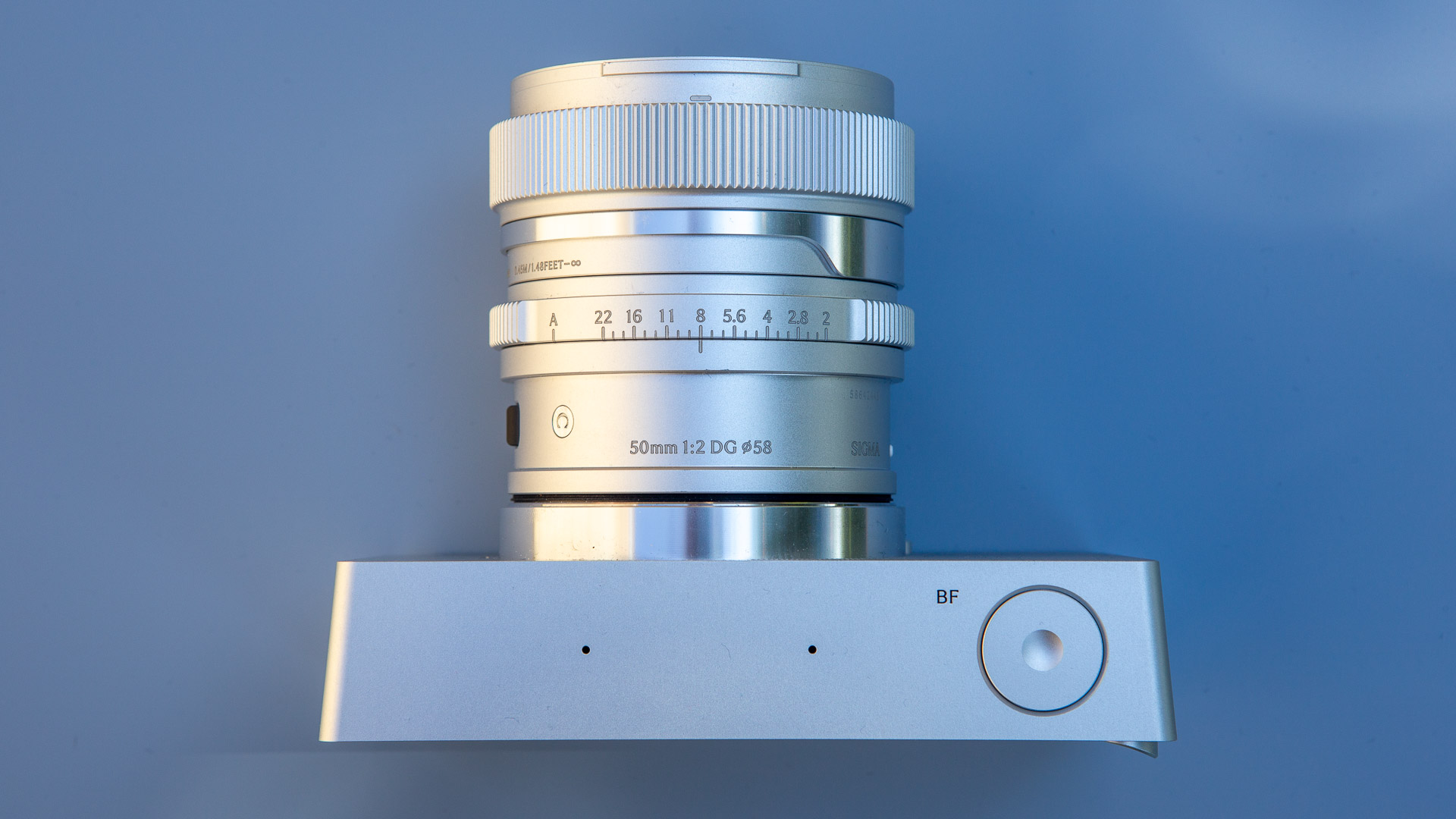
How much is it?
- Priced £1969 or $1999 (AU$3999 / €2339) body only
- 50mm f/2 lens £579 / $639 (AU$1199, €696)
Made from a solid block of aluminium in Japan, the Sigma BF comes at a premium. The camera body will cost you £1969 or $1999 (AU$3999 / €2339).
Nine of Sigma’s L mount prime lenses have been made available in silver to match the BF. These range from the 17mm f/4 to the 90mm f/2.8. My choice of the lenses, though, is the 50mm f/2, which costs £579 / $639 (AU$1199, €696).
Get all the latest news, reviews, deals and buying guides on gorgeous tech, home and active products from the T3 experts
The camera went on sale on 24th April 2025, while some of the lenses remain on pre-order.

Body and design
- Aluminium unibody design
- 3.15-inch display
- 250GB internal storage
- 446g (15.7 oz) weight
Sigma describes the BF as having a true unibody. It’s made from a single, solid block of aluminium that has been precision cut. There’s a single shutter button on the top, and the rear features three pressure-sensitive haptic buttons and a four-way dial. There’s a large 3.15-inch 2.1m dot screen on the back and a smaller status monitor display that shows the setting value (shutter speed, exposure compensation, ISO etc).
Interestingly, there’s no SD card slot on the BF. Instead, it features 250GB of internal memory. That’s enough for 4,300 DNG Raw files, 14,000 JPEG images, or 2.5 hours of video, which it can shoot at up to 6K @30fps. There’s a single USB-C port, which can be used to transfer your images, stream your video feed or charge the battery.
As compact cameras go, it’s pretty big, pushing the term pocket size, and weighs in at 446g (15.7oz). This is around the same size and weight as both Panasonic and Sony’s compact mirrorless full-frame cameras, as well as the Leica M11.
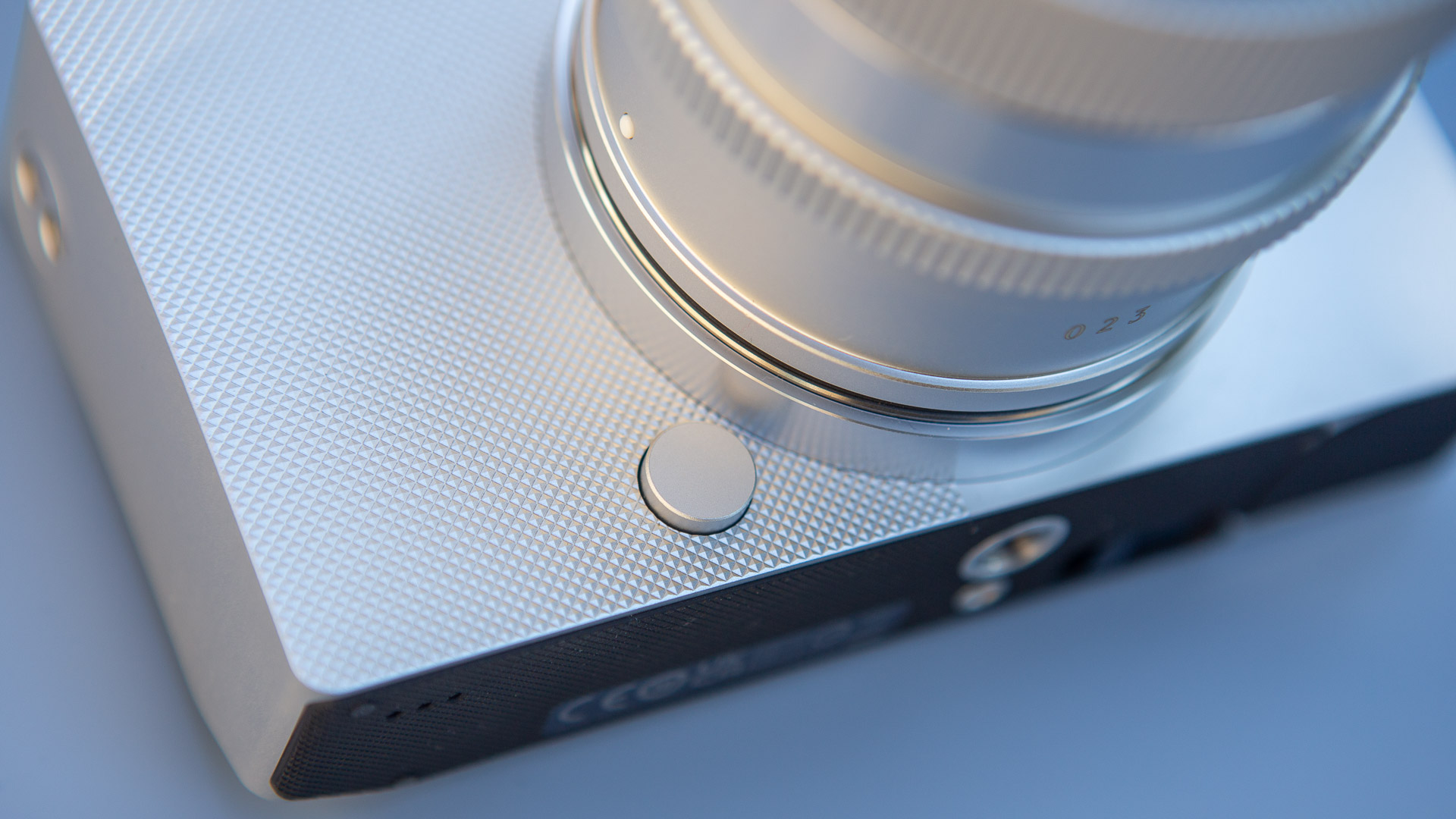
Like the Panasonic DC-S9 and Sony A7C II, it doesn’t feature a viewfinder. Instead, you have to use the rear screen to compose shots. This doesn’t have the benefit of a tilt and swivel function, like the Sony or Panasonic, or even touch control.
It has a very crisp and bright screen, and is easy to use. The four-way dial allows you to switch between functions, the chosen one then appearing in the status window, allowing you to adjust by rotating the dial.
There’s no mode dial as such here, but all the functions, including shutter speed, aperture and ISO can be set to Auto to allow either a priority or fully automatic operation. Only the aperture gets a physical control via the dial on the lens, though this depends on the lens you pair the camera with.
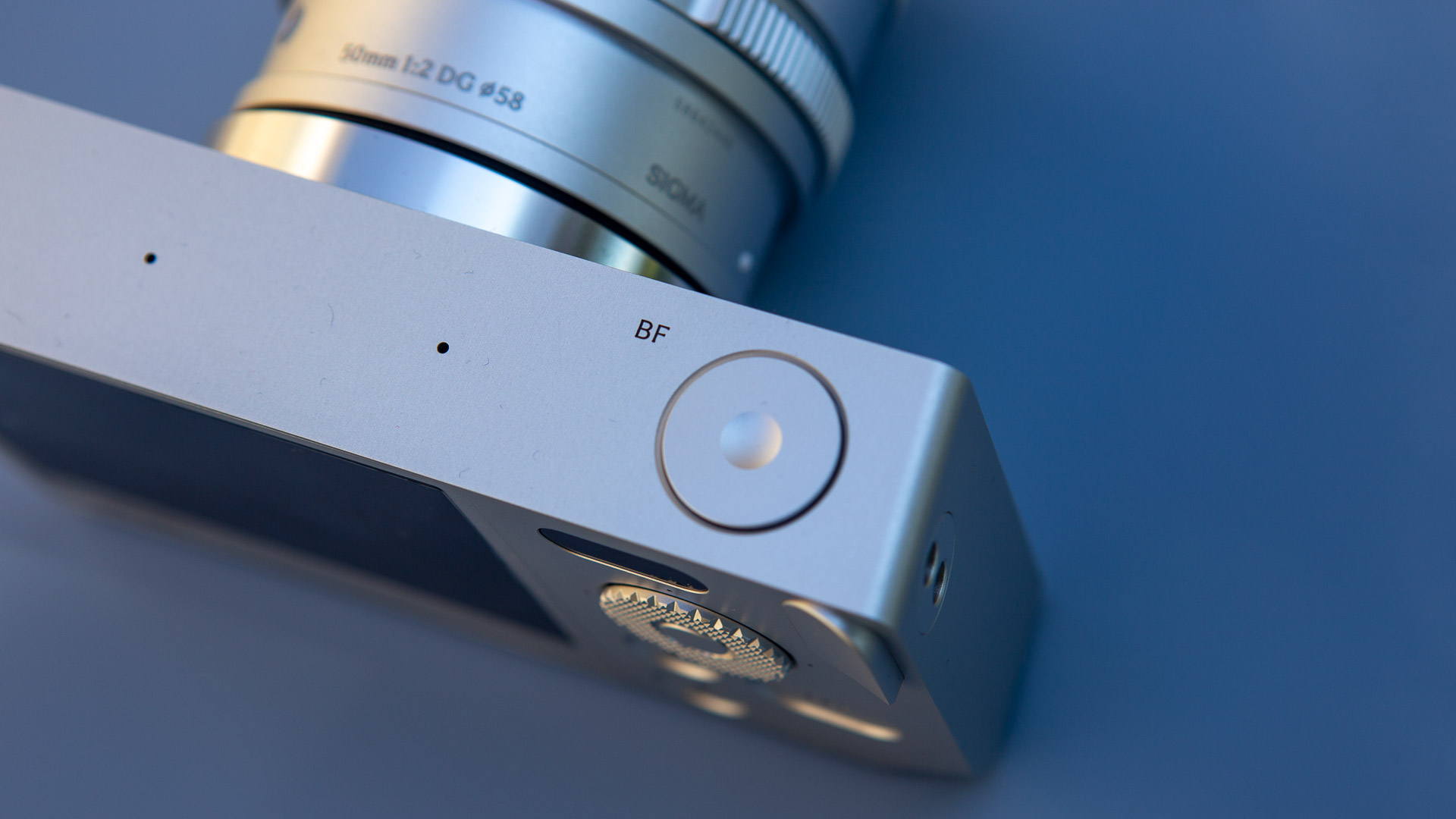
Picture and video quality
- 24.6MP full-frame sensor
- JPEG and DNG Raw formats
- 100-100,400 ISO
- 6k (6016x3384) video 24fps or 30fps
Using a 24.6MP full frame camera, the images from the Sigma BF are impressively detailed and, thanks to those excellent prime lenses, look super sharp with an incredible shallow depth of field that I really miss with smaller censored cameras and phones.
Images can be saved in either JPEG or DNG formats (or both). The DNG Raw file gives you more data for editing, should you wish to fine-tune your shots. Colours straight from the camera are rich, with the option to also choose one of 12 colour modes for your JPEG shots.
The BF has an ISO of 100-102,400, but you can see some noise in the images even at ISO 1,000 – though easily removed in software. The exposure is decent, with a choice of evaluative and spot options. I played it safe and shot at a third or two-thirds under for most of my test pics and kept all the highlights.
One nice feature is the aspect ratio guide marks that you can add to your preview frame. You can also change the final image ratio, with seven options between 21:9 and 1:1, which affect both JPEG and RAW images.
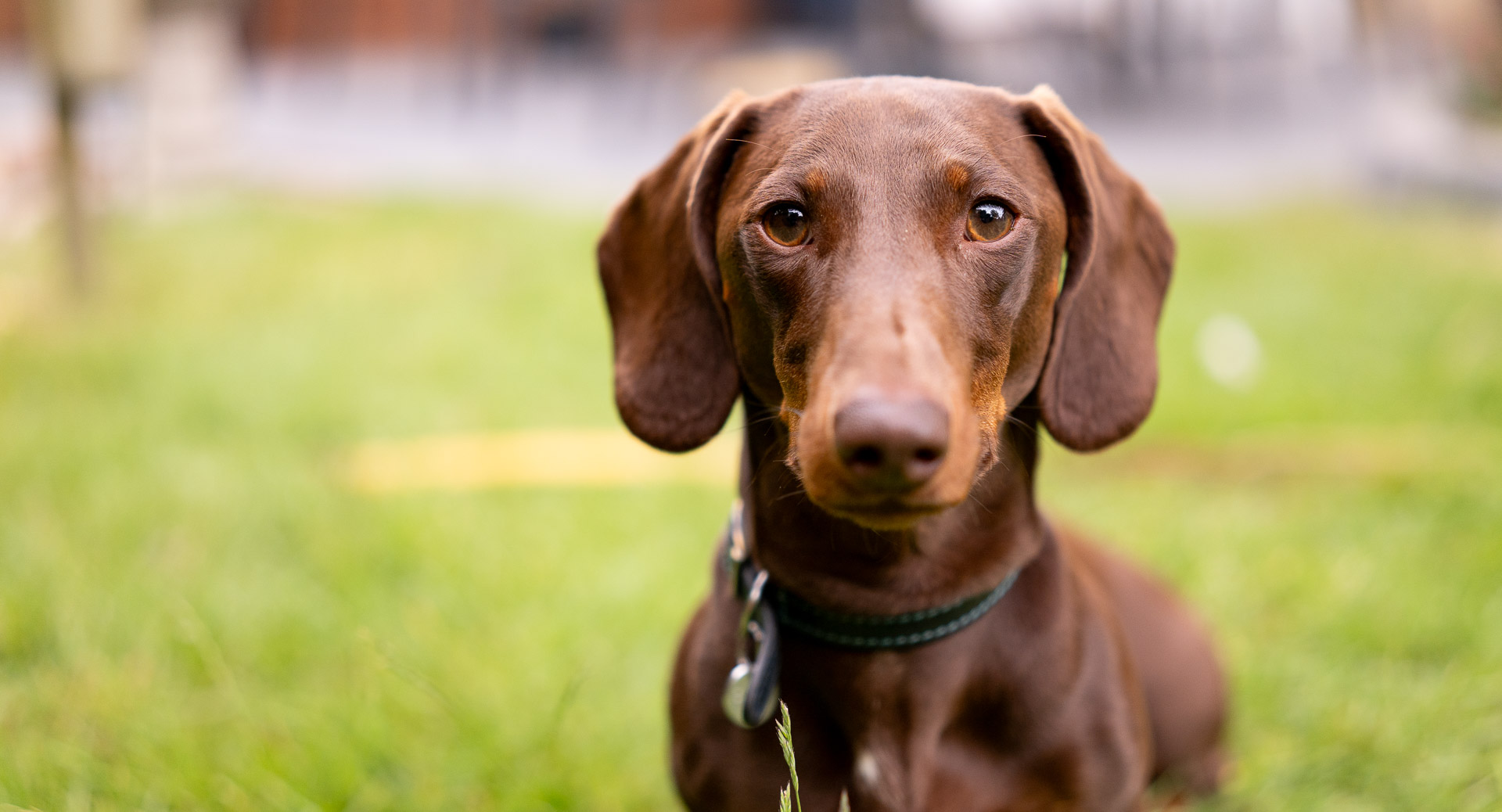




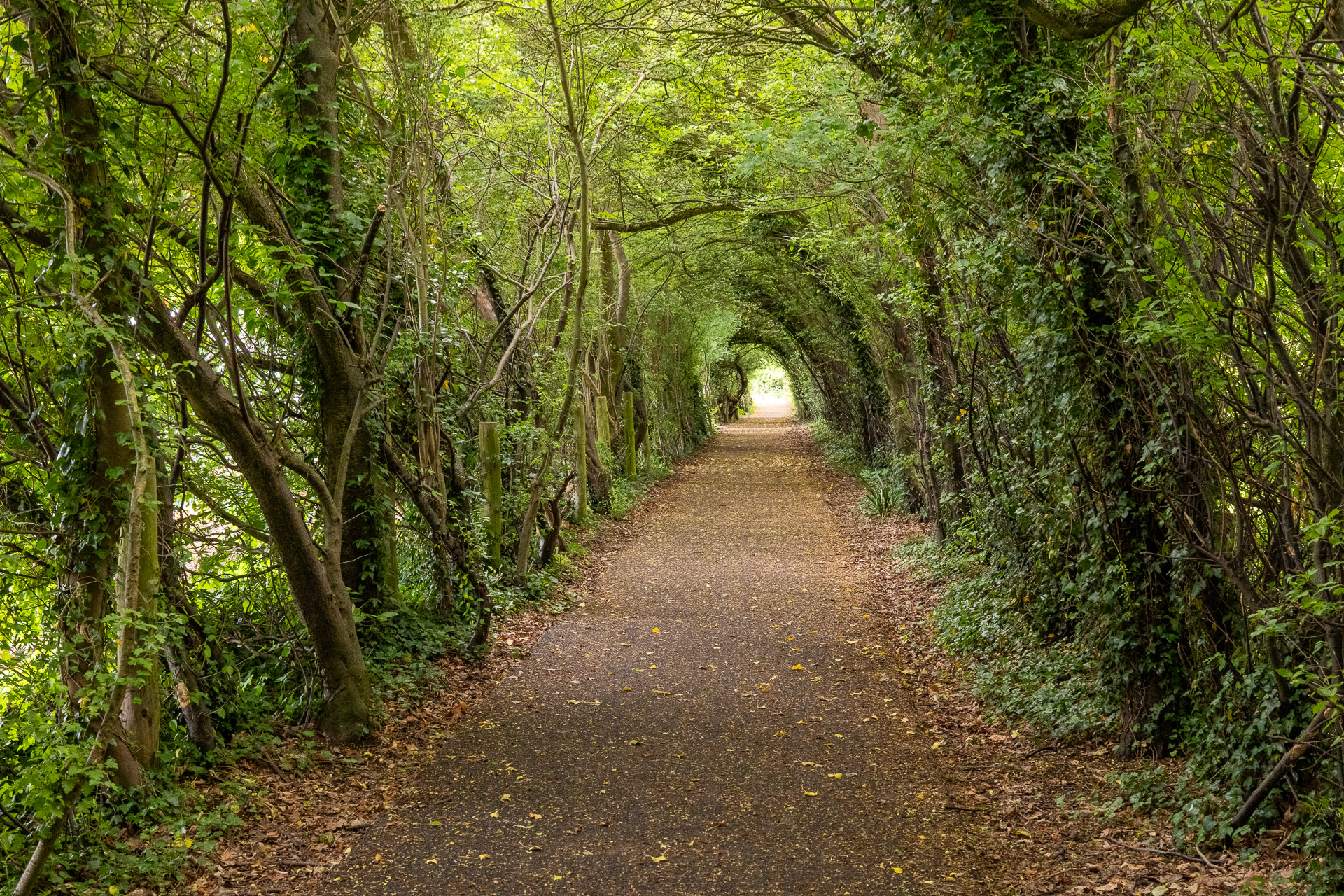
Focusing on the Sigma BF is extremely impressive. It uses a phase-detect and contrast-detect system, with both single and continuous options, plus subject tracking for people and animals. It locked onto my dog’s eye for my test shots, allowing me to get pin-sharp, even wide open at f/2.
Video mode is accessed under the shooting menu and offers up to 6k (6016x3384) at either 24fps or 30fps. It will also shoot 4K video at 24fps or 30fps, but you need to drop to FHD (1080p) to shoot at higher frame rates of 60fps, 100fps or 120fps.
The video looks spectacular, though without any optical stabilisation in the camera, you do notice every shake in your hand. There’s also no mechanical shutter on this camera, so it can suffer from a rolling shutter effect from the sensor. While some have questioned the lack of 60fps at 6k or 4k, for this camera’s market, I don’t feel it’s an issue (24fps is more cinematic).
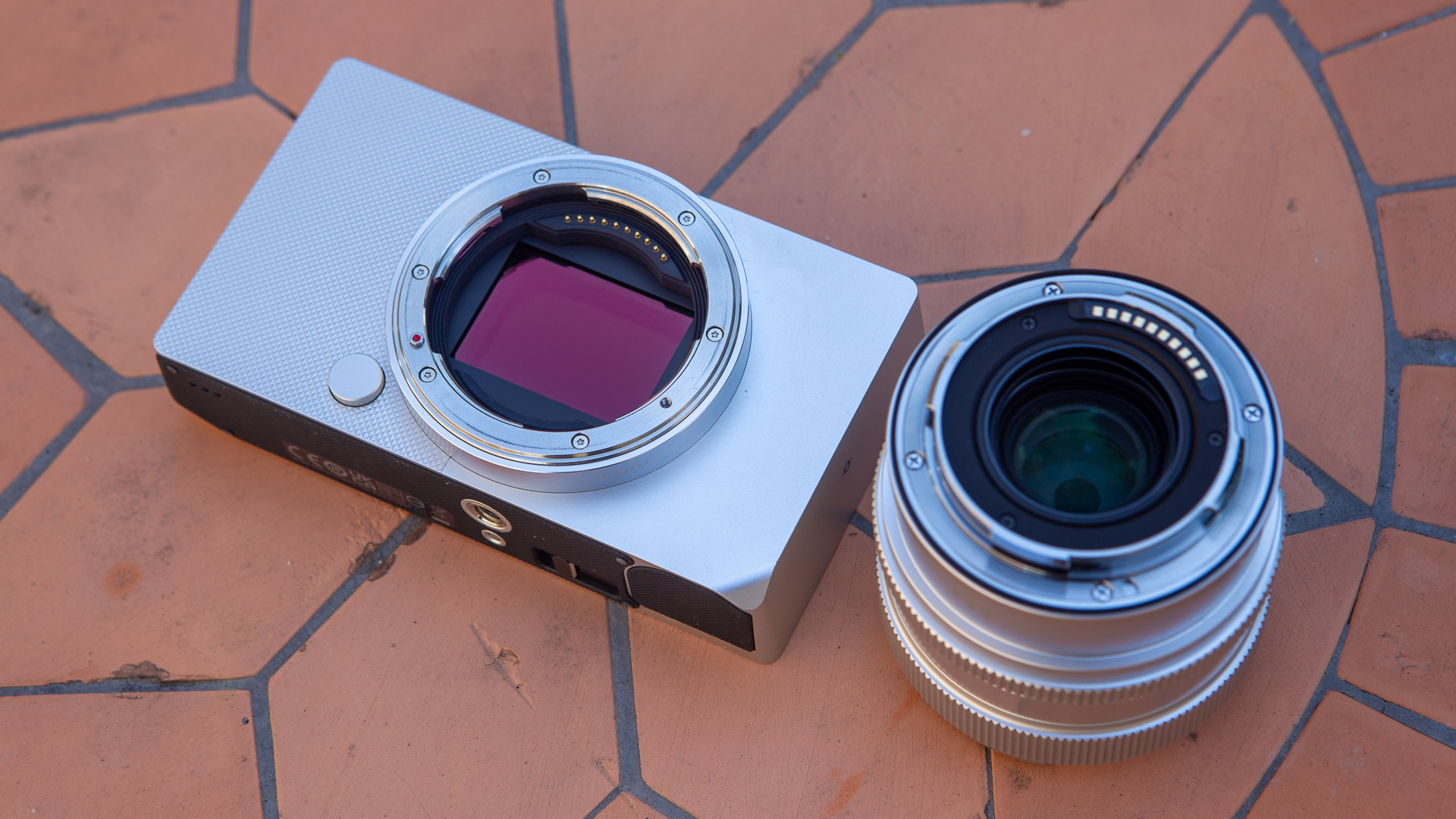
Should you buy the Sigma BF?
- Great design
- Premium feel
- Fun to shoot with
- Lack of viewfinder could be offputting
This is undoubtedly one of the coolest-looking cameras on the market. All in silver, with its minimalist design, it is incredibly eye-catching and could just be the most attractive camera I’ve ever tested – and I’ve tested a lot in the last 20 years.
Retro-styled digital cameras can often be cheapened by their plastic buttons and labels. That’s something the BF can’t be accused of. Every element of this camera feels premium and original in design, rather than a copy of some film model.
I would compare the Sigma BF with cameras such as the Leica M11-P, the APS-C Fujifilm X-Pro3, or even the fixed-lens but large format Fujifilm GFX 100RF. This is a camera that is about enjoying taking photos as much as the end result.
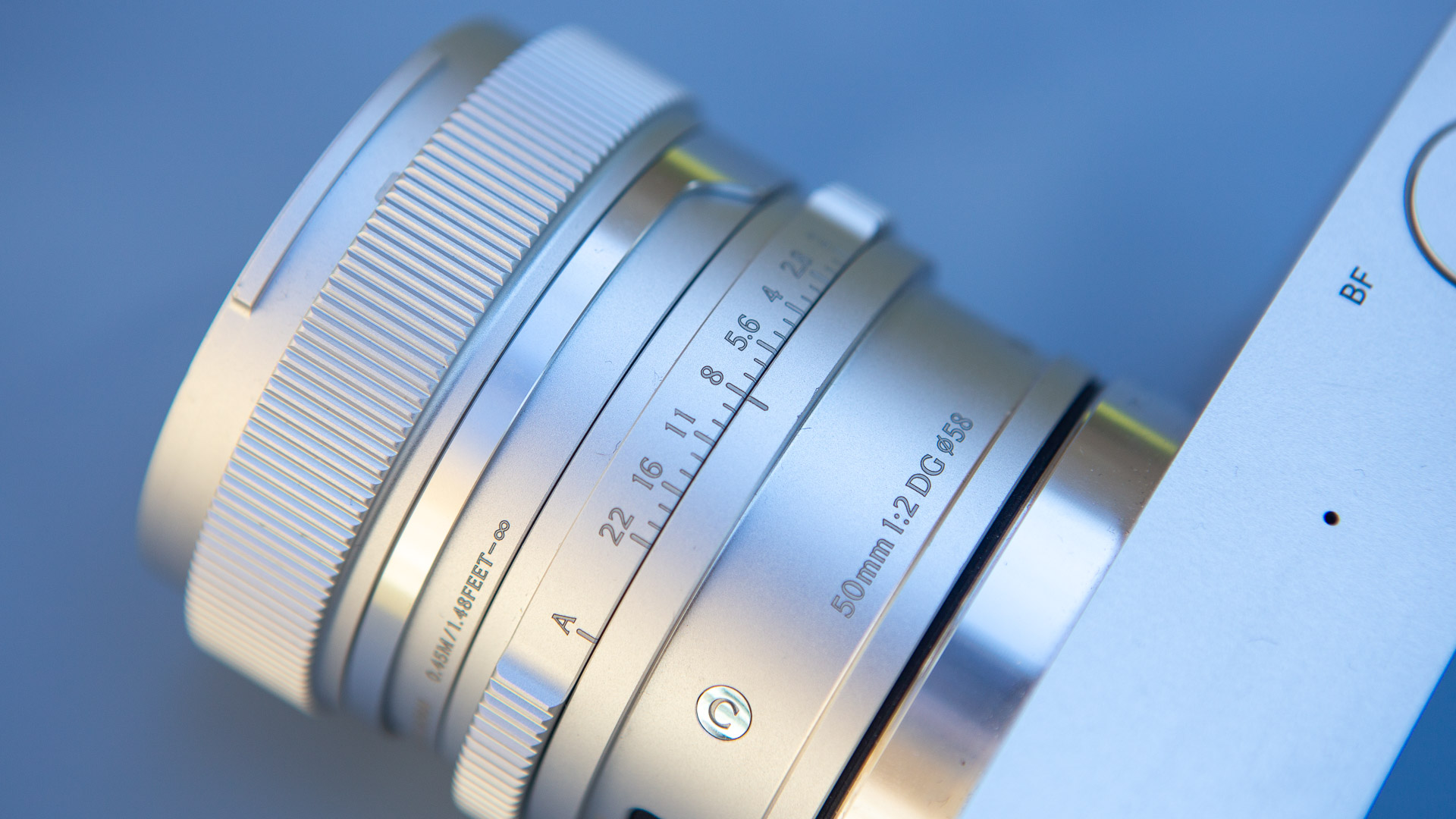
For purists, the lack of a viewfinder may seem like a disadvantage, while the lack of stabilisation makes it less than ideal for handheld video. However, I believe that the BF offers a simple and stylish experience that is just quirky enough to appeal.
For me, the combination of this stunning piece of design and the potential of the L-mount makes the Sigma BF more than just a luxury purchase. It’s a way to celebrate your photography – and look great doing it.


As T3's Editor-in-Chief, Mat Gallagher has his finger on the pulse for the latest advances in technology. He has written about technology since 2003 and after stints in Beijing, Hong Kong and Chicago is now based in the UK. He’s a true lover of gadgets, but especially anything that involves cameras, Apple, electric cars, musical instruments or travel.
You must confirm your public display name before commenting
Please logout and then login again, you will then be prompted to enter your display name.